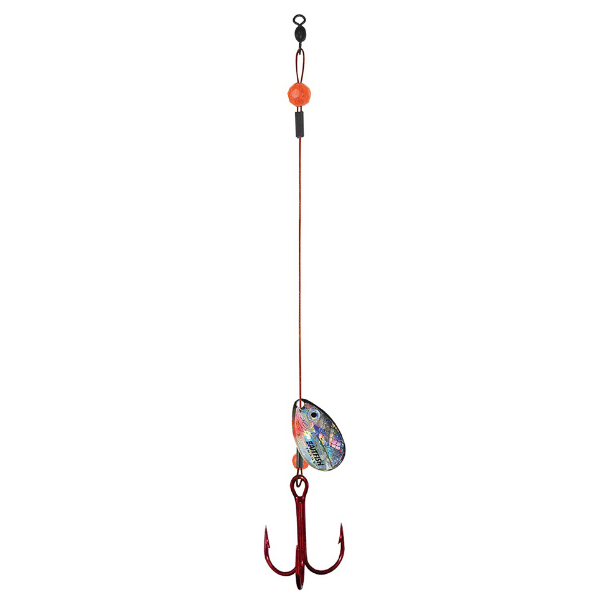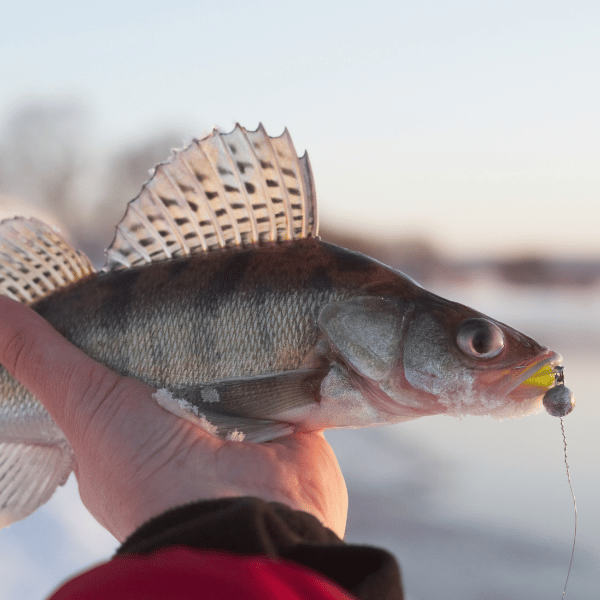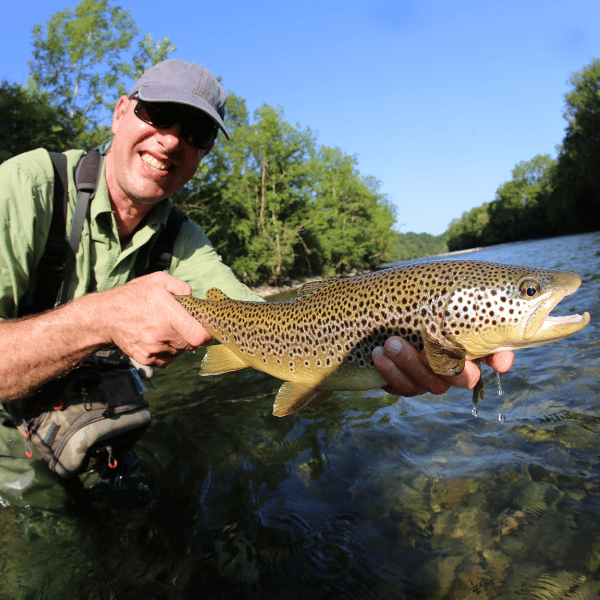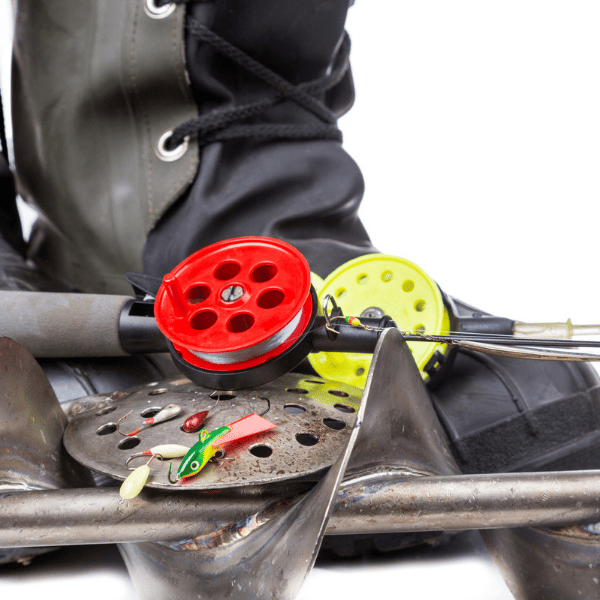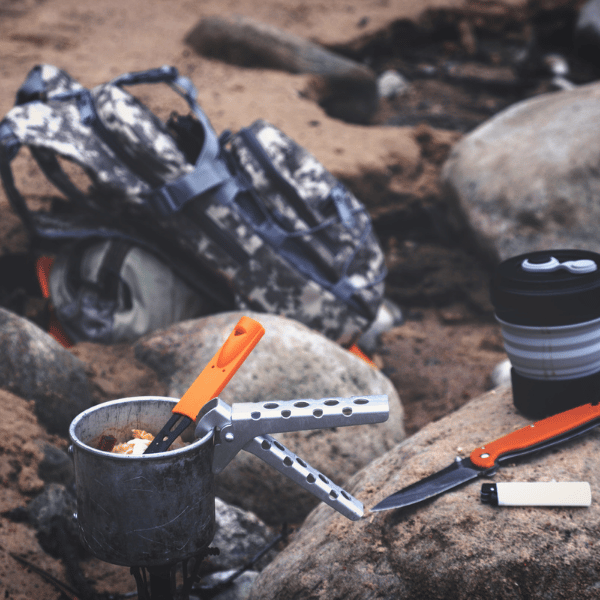Saltwater Fly Fishing for Redfish (Beginner Guide)
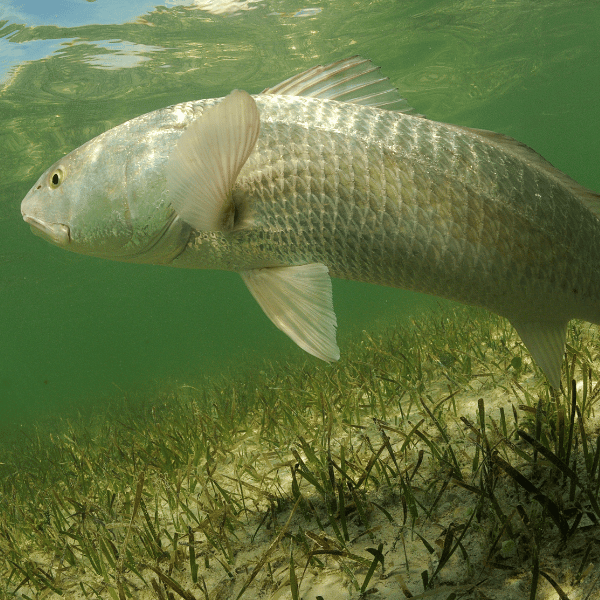
Fly fishing for redfish can be an extremely exciting venture. Redfish are often easy to spot, as they are prone to display their fins above the water in bogs and marshes. You can often find a group of redfish and land big fish gains as they race to your elusive lure.
If you want to experience fly fishing with the joyful redfish, read our guide to help you with the best time to fly fish for redfish, the gear for redfish fly fishing, and a couple of helpful tips and tricks to help you master the craft of catching reds on the fly.
Contents
Best Time to Fly Fish for Redfish
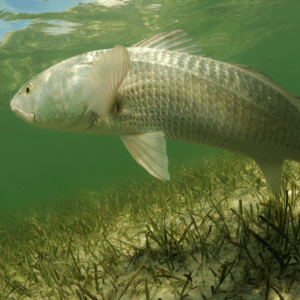
One of the best attributes of fishing for redfish is that they can be caught year-round. However, certain seasons can be better to fly fish for redfish.
If you want to fish quantity over quality, it would be best to shoot for the spring. The fish are aggressive in this season and you will find large groups of reds sifting through the bogs.
Warm water helps redfish actively throughout the day, so you can make big gains out of long fly-fishing expeditions. Look towards shallow ponds and along the shoreline, for the greatest number of reds you will find all year long.
Fly-fishing for redfish in the summer is great for variety, as the predictable warm weather brings more species of fish to the bays and marshes. This is the best season to catch a prize-weight fish and mount it to impress your friends and family. redfish are less prone to biting with excessive heat, so it is best to fish on summer mornings for the best quality fish game.
If you can find a school of redfish at the peak of dawn, you will have a few hours to land a great number of redfish each time you decide to fish for reds in the summer.
The topwater bite continues into the fall, and bull redfish begin to group up. Successfully catching redfish in the fall will depend on the weather, a highly unpredictable force surrounding marshes in the fall.
Drastic cooling and warming of the marshes in the fall, redfish stay close together in large groups this time of year. This is a great time of year for catching a large quantity of fish with a fly line. Fall is also when you will catch the fattest reds available year-round.
While not as many redfish are caught in the winter months, it continues to be a productive part of the redfish season. Charters catch most of the redfish in this season as they target larger bull redfish in clear water spaces around the coasts and bays near the marshes that contain the remaining redfish.
Cold fronts force water out of the march and make redfish relocate to predictable drainages and large bayous for easy pickings. While there is fewer fish in this part of the season compared to the rest of the year, there are still significant advantages to hunting for redfish in the winter.
Redfish Fly Fishing Gear
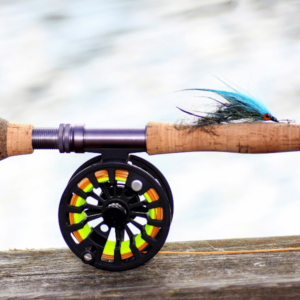
When fly-fishing for redfish, we suggest using a 100-foot line with short front and rear tapers. You may also want to look for a model that has a forward-weighted, graduated belly that will help fast delivery for a great number of distances.
Take a look at the featured products on Scientific Anglers to find the perfect fly line for redfish. Alternatively, you can use a DirectCore Tarpon floating line for a powerful front taper that will handle large flies and aid resistance against harsh winds.
The next addition to your redfish setup is a fly rod. You want to make sure to buy a rod that has fast action and tapers that are designed for intermediate to advanced casters. The rods at Temple Fork will provide a great presentation at any distance you may wish to employ.
Pick up a fly reel from Piscifun for a cold-finished lightweight model that is made from aerospace-grade aluminum. The reel is responsible for holding your line and providing the right amount of tension when trying to draw your line.
Best Redfish Hook Size
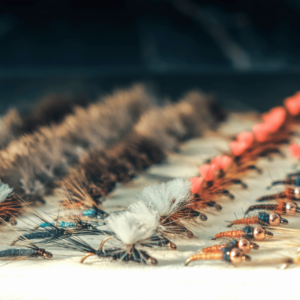
It is essential to determine an appropriate hook size for your fly-rig setup to ensure that the redfish will latch on effectively to your lure. When choosing the right hook size, you want to choose the right size to allow the bait to act naturally and not cause alarm to the school of redfish that you are targeting. You also do not want to kill the redfish with your hook upon contact with a hook that is too large.
For small redfish, we suggest that you use a #2, #1, or a 1/0 circle hook. For large redfish, you will want to employ a 3/0, 4/0, or 5/0 circle hook. Use a smaller hook in seasons with small game in great numbers, such as the Spring and Summer. Use larger hook sizes in Fall and Winter months as you prepare to hunt down larger redfish game.
Use thin wire hooks to reduce the weight of the hook and ensure the proper float function needed to lure unsuspecting redfish game. Small hooks can be effective for even medium and large-size redfish, and you would be surprised at how big of fish you will be able to lure in with a smaller hook. Stay on the safe side and determine which hook size will be best for your usage depending on the season.
Fly Fishing for Redfish Tips
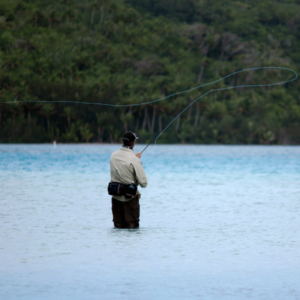
As you may already know, you can catch redfish on the fly any time of the year. Even experienced fishermen may be hesitant to test their luck in the Fall and Winter months, but redfish are abundant all times of the year so there is no bad time to make a trip out to the marshes and test out your rig.
June, July, and August are the hottest months of the year, so make sure to head out early at this time of the year. Weather is as unpredictable as travel patterns, so the more you research the better you will be able to perform.
Redfish is great prey for new anglers as they are easy to spot in the bogs. Once you find a bog that is swarming with redfish tails, it is only a matter of time and skill that stands in your way of catching many redfish.
While your cast does not have to be as accurate as you would have to be when catching more elusive fish, it will still take some practice to effectively lead redfish to your lure.
Redfish tend to bulldog a new angler into breaking free, but to an experienced fly-fisherman, the fight is the best part of the sport. Know that you will have to not only lure unsuspecting redfish to your hook, but you will also have to pull it into your net. Redfish are known for giving a good fight, so do not let down until you know the battle is over.
The only real determining factor is practice, as continual practice will develop your skill. The most you will be casting is 30-40 feet, so practice casting at home on your lawn by anchoring your leader to a piece of spare wood.
Finding the right distance when leading redfish to your lure will depend on the circumstance and the personality of the fish. More practice will help you develop the skills necessary to get a large number of redfish any time of the year.
Expensive gear and bayou guides are not the only way to improve your fly-fishing success. Find a mentor that will help you navigate your fishing grounds and show you the necessary investments to improve your performance in this sport.
